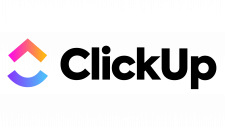Kahoot Logo
Kahoot is a popular learning platform for quizzes, test creation, and educational games. With Kahoot, the process of checking understanding or discussing a question can turn into a really exciting game. The platform has a web version, many consider it more convenient to use the mobile application. This learning platform is suitable for any academic subject and any age. The service is free for educational projects, but some of the advanced functionality is not available. There are paid plans with a full range of functions.
Meaning and history
In 2012, Morten Versvik, Johan Brand, and Jamie Brooker launched Kahoot! together with Professor Alf Inge Wang and the Norwegian University (NTNU) as part of a collaborative initiative. Later, Åsmund Furuseth, an entrepreneur, joined the team. It started years earlier and in 2006, Versvik and his computer science professor created one of the game’s initial prototypes. Since its inception, the service has facilitated hundreds of millions of educational sessions with 9 billion (non-unique) participants in more than 200 nations and regions.
What is Kahoot?
Kahoot is an application for educational projects. With its help, users can create a test, survey, educational game, or organize a knowledge marathon. The application works both as a desktop version and on smartphones.
2012 – Today
The service has used the same logo for ten years. It was just the name with an exclamation mark at the end. It was printed in purple using a custom sans-serif font. The purple color already implies creativity, but the playful and funky font enhanced the positive impression, prompting one to try the application.
Font and Color
The font featured in the logo is similar in style to Ice Cream Man Regular by Hanoded. According to the company itself, the name is printed using Montserrat typeface. It looks user-friendly and original.
The color palette consists of a purple wordmark on a neutral white background. Purple color is the result of mixing red and blue. It not only looks grand and powerful, but also encourages creativity, reflection, analysis, and intellectual development.











